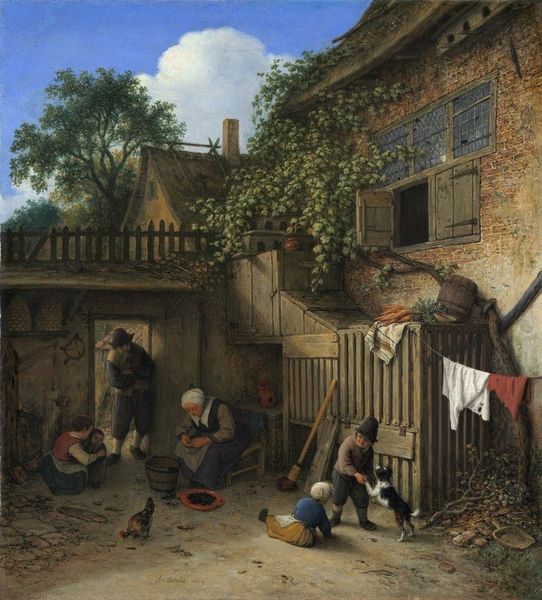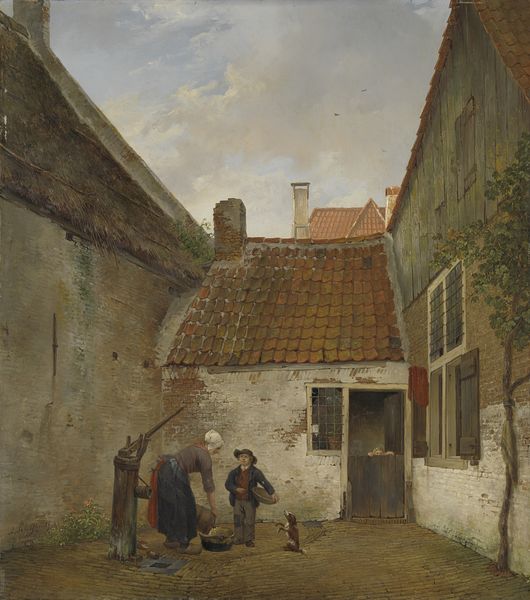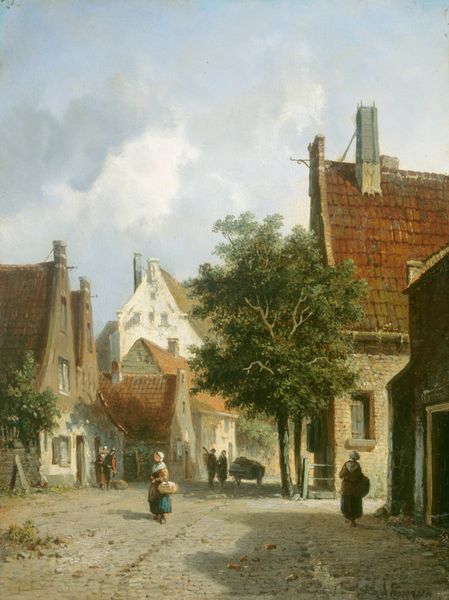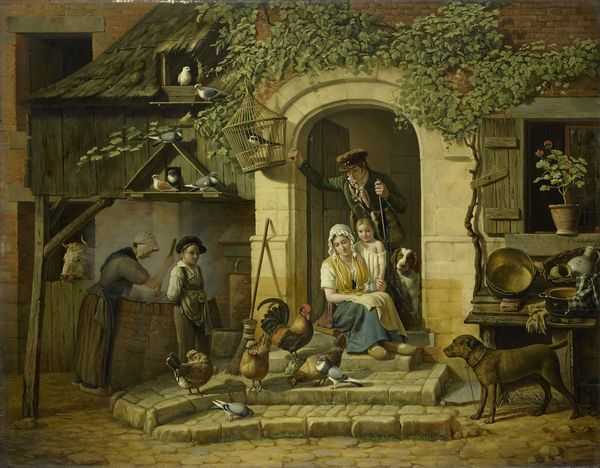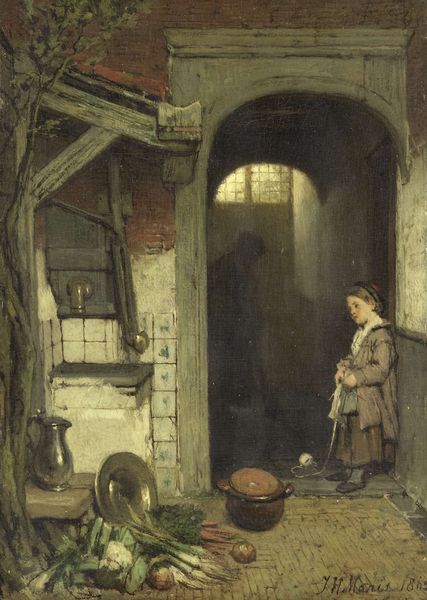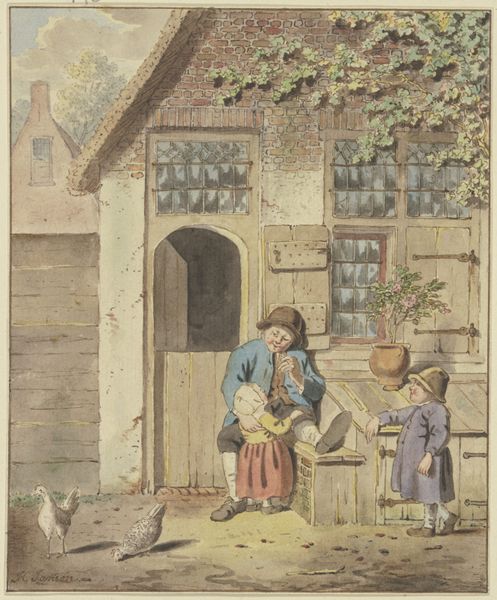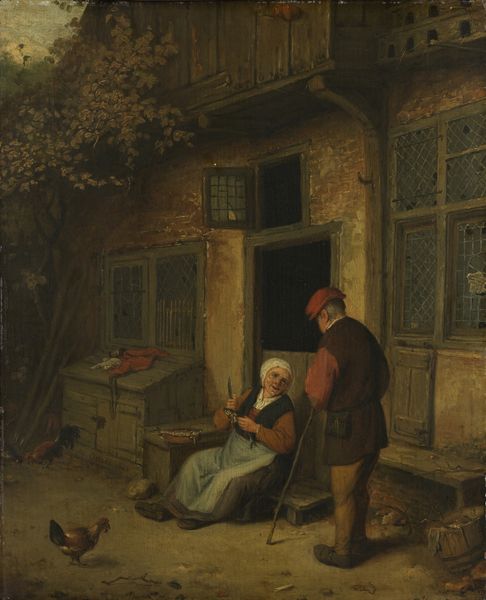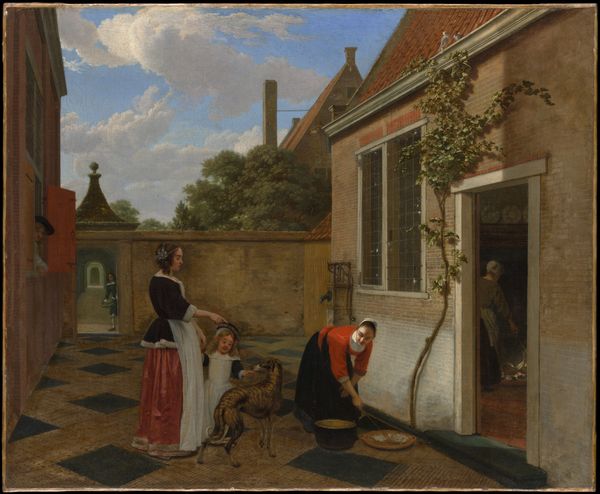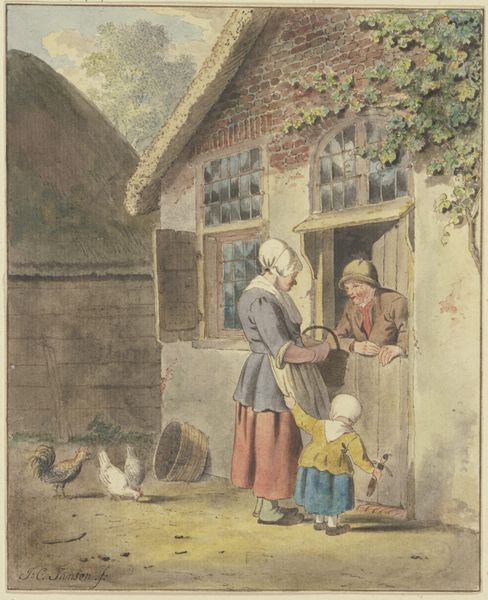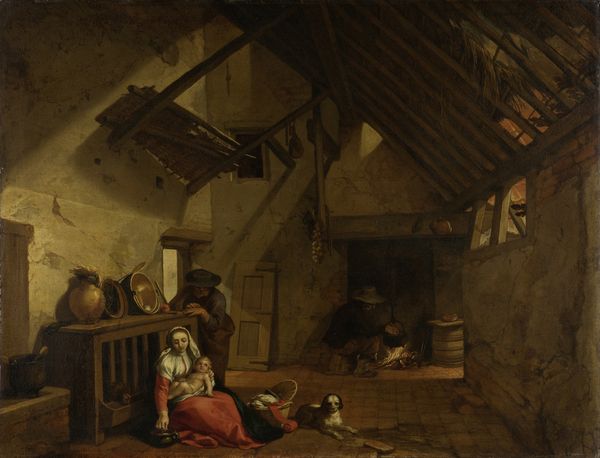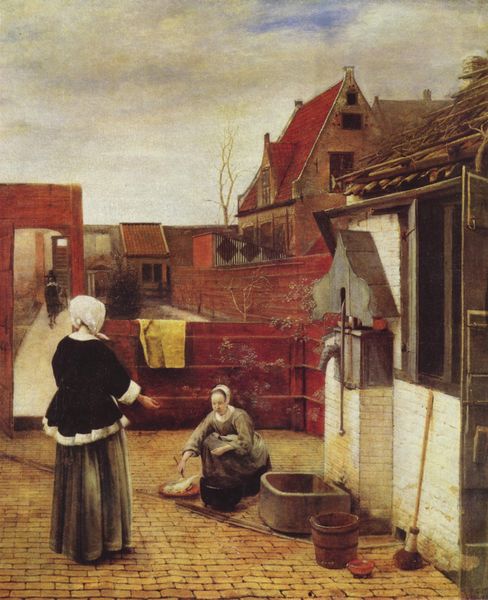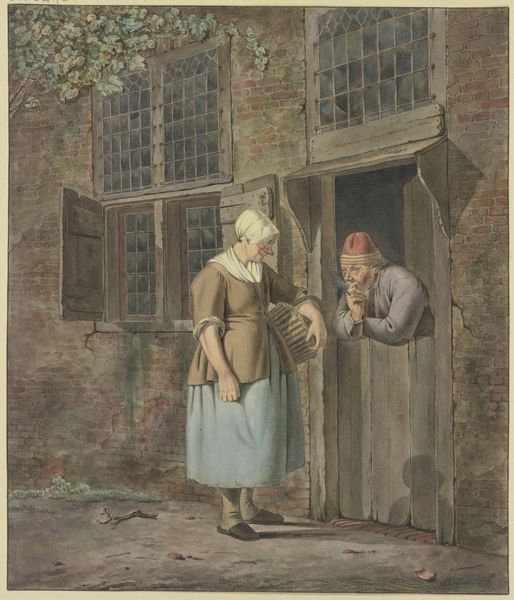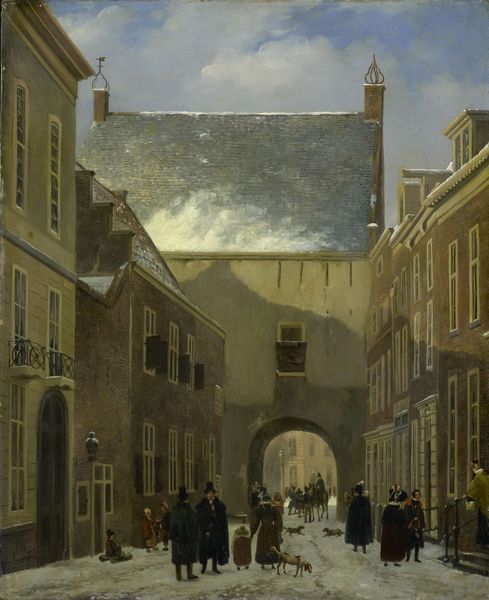
painting, oil-paint
#
dutch-golden-age
#
painting
#
oil-paint
#
landscape
#
house
#
figuration
#
child
#
painting painterly
#
genre-painting
#
realism
#
building
Dimensions: 60 x 73.5 cm
Copyright: Public domain
Editor: Here we have Pieter de Hooch's "Courtyard of a house in Delft," painted in 1658. It's an oil painting, and I find the composition particularly striking. The way the light falls and leads your eye through the different spaces is incredible. What do you see in this piece? Curator: I appreciate your observation of the light, its function in the visual architecture. Notice the geometric rigour; how De Hooch employs orthogonal lines to structure the composition. The brickwork, the doorframes, even the paving stones all contribute to a carefully calibrated perspective. How does this linearity influence your experience? Editor: It definitely creates a sense of depth and order, almost like a stage. I noticed that the figures are placed quite deliberately within this framework. It feels very balanced. Curator: Precisely. Observe how the artist contrasts the red brick with the cooler tones of the sky and the garments of the figures. These juxtapositions are not arbitrary; they generate a certain tension, a visual rhythm that animates the scene. Do you perceive any semiotic weight in these choices? Editor: I think the colors definitely influence the mood; the red is warm and inviting while the cooler tones suggest a sense of calm and order. So it’s not just about aesthetics, there may be something symbolic in those choices too? Curator: Indeed. De Hooch's meticulous attention to spatial organization and chromatic relationships elevates a simple genre scene to a sophisticated exercise in pictorial construction. These weren't casual observations; his arrangement of space and colour produces profound formal harmony. Editor: It’s fascinating how much there is to unpack simply by looking closely at the structure and the use of color, especially in terms of contributing to the feelings evoked by the painting. Thank you for opening my eyes to that. Curator: My pleasure. By rigorously examining these elements, we reveal not merely a depiction of 17th century Delft, but the very essence of aesthetic form itself.
Comments
No comments
Be the first to comment and join the conversation on the ultimate creative platform.
